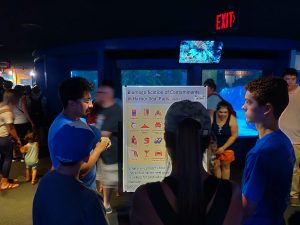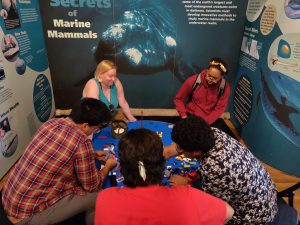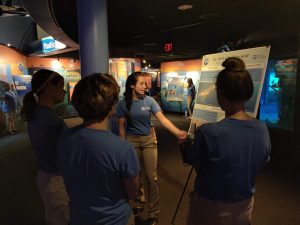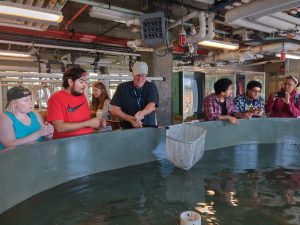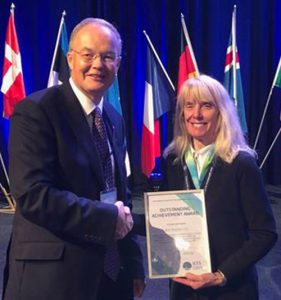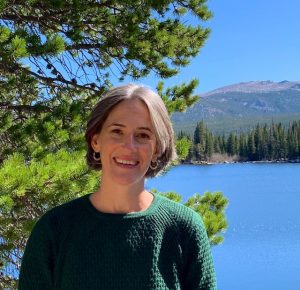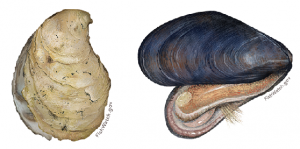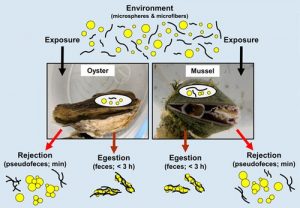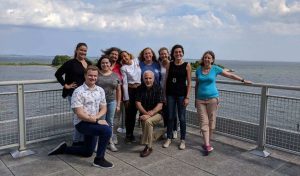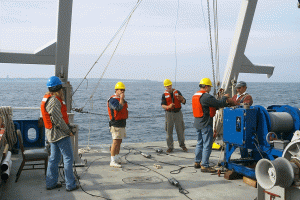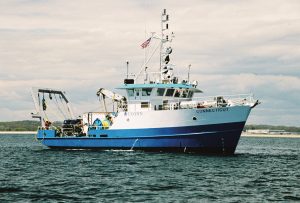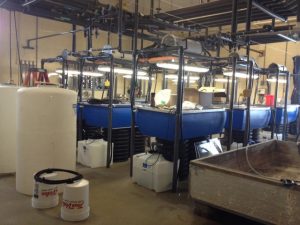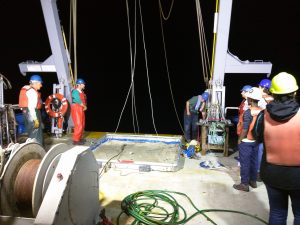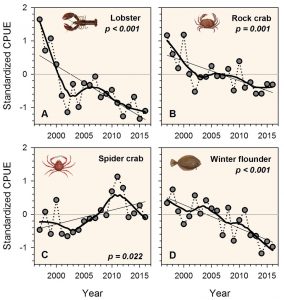Although the academic year is over by mid-May, the Department of Marine Sciences does not take a summer vacation. Outreach, research trips, summer interns, and more activities keep Marine Sciences bustling during the summertime. Included here are just a few of the programs from summer 2019.
Marine Sciences and Mystic Aquarium REU program
This year marked the last class in the inaugural cycle of our new NSF funded Research Experience for Undergraduate (REU) program with the Mystic Aquarium. Our REU students came from all corners of the country: California, Florida, Iowa, and Maine. Eight REU students were paired with Marine Sciences Faculty or Mystic Aquarium researchers on projects that spanned all levels of the marine food web. The program provides students with housing, a stipend for working full-time in a lab and for food, and all transportation. The students just focus on conducting science! This year featured new collaborative projects between DMS and the Aquarium, such as the first ever documentation of ciliate diversity and population dynamics of Beluga Whale blowhole spit. The Marine Sciences Graduate Student Organization also integrated itself into the REU program by providing invaluable peer support for oral and poster presentation experience. After a laudatory site visit by the NSF program manager, we were encouraged to apply for another four years of funding and to increase the number of students to 10. Our fingers are crossed we can continue this exciting and rewarding program.
STEM Success and Student Support Services
STEM Success, the undergraduate retention program for incoming Science Technology Engineering Mathematics (STEM) students, returned this summer! Fourteen in-coming undergraduate students enrolled, who are either first-generation college students, from low-income households, part of underrepresented populations within UConn, or in need of some extra academic support.
For four weeks, students participated in eight workshops, twice-a-week, that were designed to promote discussion amongst peers and with graduate students on STEM subjects and life at Avery Point. Activities ranged from performing titrations, carrying out plankton tows, introducing programming, and learning how to use a microscope. This enabled the incoming undergraduates to become familiar with basic scientific concepts and laboratory etiquette, readying them for their science classes this Fall. The primary goal was to add another layer of support for these students by fostering connections with their peers and their future teaching assistants.
For the second year in a row, the STEM Success program occurred alongside the intensive five-week Student Support Services summer program directed by Aaron Collins. Twice as many marine sciences graduate students got involved this year to lead the workshops. STEM Success has been designed and coordinated by Dr. Emma Cross the previous two years and she is now handing over the reins to Dr. Lisa Nigro. Our graduate students were super enthusiastic and all the incoming first-years enjoyed and found the program useful!
Pre-college at Avery Point
The Department of Marine Sciences participated in UConn’s pre-college summer program for the second time. The program, titled “marine biology and oceanography” enrolled 17 students from Connecticut, Massachusetts, New York and Saudi Arabia (by way of New Hampshire). The students stayed in Storrs and were transported to Avery Point during the week. Students’ favorite activities included taking water quality measurements around Pine Island off the R/V Lowell Weicker, exploring invertebrate ecology from settling plates, going on a behind the scenes tour of the Aquarium, and dissecting dogfish. Instructors were Claudia Koerting and John Hamilton. The program ran the last full week of July.
UConn Summer Undergraduate Research Fund (SURF) Awards
Each summer, UConn awards close to 50 undergraduates with financial support to explore a research project of their own device through the Summer Undergraduate Research Fund (SURF). Over the last few years, Marine Sciences undergraduate students have consistently received recognition. This year, seniors Mackenzie Blanusa and Annalee Mears were fully funded for summer research. Mackenzie combined atmospheric science and chemical analysis in her project entitled, “The Effect of Storm Type and Source Region on the Chemical Composition of Precipitation along the Long Island Sound Coastline.” Dr. Kelly Lombardo and Dr. Zofia Baumann mentored and guided her research. Annalee worked with Dr. Catherine Matassa on a project about predator-prey interactions called, “Stoichiometry of Fear: Do Predators Affect the Balance of Carbon and Nitrogen in their Prey?” Previous SURF recipients include Clare Schlink (2018), Sarah McCart (2017) and Jessica Hinckley (2019). We are proud of our undergraduates for their great contributions!
